|
For those of you following the DevaCurl fiasco: A $5.2 million settlement has been reached and looks to put an end to 13 class action lawsuits filed over the harm caused by certain DevaCurl products. $5.2 M DevaCurl Hair Loss Class Action Settlement With $20 Rebates, $19K Awards Proposed DevaCurl Maker Hit with Lawsuits Over Hair Loss, Scalp Irritation The hunt to replace DevaCurl, every curly girl’s fallen savior Curly girls suffered a huge loss. But we always bounce back. All products featured here are independently selected by our editors and writers. If you buy something through links on our site, Mashable may earn an affiliate commission. Almost a year ago today, I suffered one of the greatest betrayals of my life. OK, that's dramatic. But it's hard to overstate the magnitude of shook the curly hair community was back in January 2020. It all started when influencer Ayesha Malik posted a tearful and scathing video warning her roughly 250,000 followers to stop using the beloved, longstanding golden standard of curly hair products: DevaCurl. Her brunette corkscrews as frazzled as her emotions, Malik explained how she went from proud brand ambassador to boycott leader: Over the course of a year, she started noticing inexplicable damage to her prized, perfectly preserved locks, her thick mane not only thinning but changing texture in a way usually induced only by chemical relaxers. She was far from the only one. Malik's video opened the flood gates. Other influencers and even DevaCurl stylists came forward, culminating in a Facebook support group of 60,000 echoing similar experiences that led to a class-action lawsuit. The lawsuit names some of the most popular products, including their entire shampoo cleanser and conditioner line, leave-ins, styling gels, and repair treatments. Influencers who hadn't experienced these negative effects weighed in, too, most with support and belief in the allegations but others to challenge the accusations. Watching this chaos unfold, it felt like the ground fell from beneath me as I realized DevaCurl — the products I once heralded as the divine savior of my hair and beauty — might be the culprit for the damage I'd been literally losing hair over. After years of happily spending thousands of dollars on DevaCurl products and services, I threw away gallons of the stuff in the trash, doubtful that I could ever trust again. Straight-haired readers might eye-roll at the idea of mourning a brand like this. But fellow curly-haired sisters know the struggle and sacred journey of learning how to care for, embrace, and hopefully even love your curls. It comes only after years of trauma. While curly hair stigma is pretty universal, as a white Latina myself I've had the privilege of not being subjected to the worst of it. For Black girls and women especially, natural afro-textured curls are politicized, discriminated against, and almost completely excluded from mainstream beauty standards, media representation of all kinds, and literal curly hair ad campaigns. From Mia in the Princess Diaries to country music-era Taylor Swift (whose curls allegedly miraculously straightened due to natural causes right as she became more mainstream pop), at an early age we're fed the clear message that curls are something to be fixed, eradicated, straightened out. The insecurities of growing up with curly hair are so real that Dove saw a business opportunity in exploiting them in the way they did body image insecurities. Despite knowing it's all bogus (no one recommends actually using Dove curl products), I still cry every time I watch this old commercial. For curly women and girls, your hair is the first thing people notice about you. For better or for worse, curls become inextricably tied to your identity. Whether that identification takes the form of self-loathing or defiant pride all depends on finding the right products and styling techniques. The DevaCurl cult-following went beyond products, too, with a whole oeuvre of essentials like the famed Curly Girl Method and pricey Devachan salons with special Devacuts and Pintura highlights. Despite the high cost, it always felt worth it, an investment into the best ingredients that nurture your curls that need to recover from years of trying every damaging fix under the sun. Seeing the company's fall from grace felt like a loss of identity. The products once responsible for making me feel beautiful for the first time ever as a young girl were now potentially ruining the locks I'd worked so hard to love. To be clear, nothing has been proven. In a statement to its "devoted Deva community," in February, the company said it was, "committed to providing the information you need to continue to use DevaCurl with confidence." Pointing to the "rigorous and thorough testing" all their products undergo, it promised to work with "an independent third-party toxicologist to verify the safety of these formulas." (Though expert doctors in this New York Times article question many of the facts DevaCurl presents on its website to refute allegations.) It's been pretty much crickets ever since, but the damage was already done. The lawsuit is ongoing with no trial date set, but both sides have asked to make their case before a jury, according to court documents. My trusted longtime hairdressers at CurlsOneonOne (owned by two incredible ladies I met at the now-closed Los Angeles Devachan) are dubious that DevaCurl is to blame for my case. To be fair, I'd been pretty aggressively bleaching my hair Khaleesi-silver since 2014. But when my colorist cut me off in 2019, my curls didn't bounce back like usual during bleaching breaks. The alarming amount of hair fall continued, along with scalp dryness and curl pattern loss after six months of nothing but Olaplex for color damage and deep conditioner treatments. However, discontinuing all DevaCurl use led to immediate improvement. More damning still, months post-DevaCurl, I had a curl-mergency and only access to the travel-size Ultra Defining Gel (a product listed in the lawsuit) that I kept in my purse. Even a small amount caused that now-familiar burning sensation and unusual shedding during my next shower Listen, I can't say whether DevaCurl is the cause. But breaking from my religious devotion to the brand opened up new paths of discovery that only made me understand, embrace, and appreciate my curls more. But the process of finding new products and a new regimen was harrowing — and expensive. It takes lots of trial and error. In August, Malik made her first video since that explosive one in January, her curls miraculously unchopped and more fortified. She says she worked day and night to recover from the Deva damage, and still has a long way to go. But from where I'm standing, it's the hope every suffering curly girl needs to know they can bounce back from this. Though I don't claim to be an expert, after dozens upon dozens of products and hours of research, though, I've picked up a thing or two. So here's my guide to replacing DevaCurl. Everyone's curls are unique, so not everything will work for you. But maybe we can learn from each other while on our individual journeys to curl perfection. [Editor's Note: While the writer independently purchased almost everything listed here, BounceCurl did provide samples for review]. 1. Find your curly hair gurus. Like everything in the influencer economy, curly hair YouTubers get sponsorships and make money the more you spend on products they recommend, which incentivizes lots of bullshit. But the best beauty bloggers know the value of their honest opinion is worth more than a #sponcon payday. Trust the ones who are transparent about their relationship to brands and that include unmonetized content and affordable options. That's why I personally love Bianca Renee. Aside from sharing the same hairstylists, she's never led me astray on general consumer knowledge. She's great for learning how to be a smart shopper, figuring out what's right for you, which products you really need, the no-no ingredients, exploring options, and testing brands for that curly girl seal of approval. For styling routines and tricks, seek out curl gurus with similar hair textures and concerns. Fellow 3B-C girls should check Manes by Mell. She has a wealth of tutorials, with videos for every type of situation like changing seasons, sleep-to-wash-to-style-to-refresh regimens, correct product application, essential accessories, mistakes to avoid, budget picks, and technique pros and cons. She was anti-Curly Girl Method before it was cool so I trust her as a zero-bullshit stylist (and notably one of the most vocal influencers denying Devacurl damage). 2. Throw out all those strict rules and experiment instead. Treat all curl advice and rules from tried-and-true methods with skepticism, including mine. None of us really know anything except what's worked for us. Feel free to deviate and, above all, question assumptions and one-size-fits-all truisms. In my many years of Curly Girl Method devotion, I was told sudsy shampoos and brushes were sacrilege. But failing to cleanse my roots likely contributed to product build-up that caused scalp issues, hair loss, and stunted growth. Meanwhile, exclusively finger brushing led to uneven product distribution. I religiously stuck to wash-and-go air drying to avoid heat damage, with no patience for diffusing. But like a curly hair newbie hopping on the latest TikTok trend, I tried plopping for the first time. To my amazement, it cut my dry time in half and created amazing from-the-root volume with zero extra effort. See your journey as a literal experiment: Make hypotheses, test them, add and subtract variables, and through deductive reasoning learn what leads to more consistent great hair days. 3. You do NOT have to spend a lot of money for great products. One of the good disillusionments from this DevaCurl fiasco was realizing some of the best, healthiest products for curly hair are affordable drugstore picks. SheaMoisture and Cantu, for example, are always in the $5-$10 range. Cheap, trusted classics help keep your routine affordable, especially when it comes to shampoo and conditioners which wash out of your hair rather than staying on it for days like a styling product. Save your money for treatments or fun stuff like Curlsmith's temporary color hair makeup (which worked great on me for Halloween). By saving on products you can also likely budget for great curl specialists and stylists, too, which I still recommend paying top dollar for rather than going to the nearest SuperCuts. 4. Don't underestimate the importance of the right accessory. The above rule still applies here, but don't blow your budget on products alone. The three brushes I now can't live without for wash days include:
Also great for your arsenal:
5. OK, here's my new routine and DevaCurl product replacement recommendations. While these are what I like personally, it is not a definitive guide. Others have crowdsourced a publicly edit-able list of alternatives for each product, but note that there's zero vetting involved.
The moral of this story, though, is that finding your personally-tailored curl routine will never be a paint by numbers experience. Just trust your gut, and be confident that you're the best expert on your hair. From Mashable
0 Comments
8/27/2021 0 Comments What is Coarse Hairand 7 Tips to Style It the Right Way Our hair texture, density and thickness vary just like our facial features and body shapes do. Although coarse hair is often described as “difficult” and “challenging”, the main issue is knowing how to look after this kind of hair structure. Indeed, styling coarse hair requires some effort – from detangling the knots to the potentially longer drying process. While this can sound like a lot to handle, these struggles aren’t harder than styling fine and flat hair; it’s all about learning some tricks and embracing the unique features of your hair. What is Coarse Hair? Coarse and thick hair are often used interchangeably. However, hair thickness is defined by the number of the strands, their density, while coarse hair is hair with a bigger diameter of each individual strand. You can easily check if you have coarse hair by taking a bunch of hair and rubbing it between your fingers: if you can define separate strands and they feel and look like threads, you have coarse hair. The main downside is that this hair structure is more prone to dryness; consequently, it can easily become knotty, wiry, and uncontrollable. On the positive side, coarse hair is very good at holding styles and volume and it doesn’t require too frequent washing. Hence, using good quality hydrating and restoring products, you can easily make coarse hair your best friend. Both straight and curly hair can be coarse and fine, as well as thin and thick. On the hair type chart, 1C, 2C, 3C and 4C types are often on the coarse side. While coarse hair structure is mainly determined by genetics, hair often becomes coarser when graying. 7 Tips for Coarse Hair Treatment Here are 7 tips and tricks that will help you cater to the unique needs of your hair structure. Amend your routine, learn to deal with the challenges, and your hair is sure to be your source of pride and confidence. #1: Start with the Haircare Products for Coarse Hair A healthy hair care routine is the ultimate base needed for good-looking locks, and for coarse hair the key point is moisturizing. The best hair products for coarse hair are those without parabens, sulphates, and other drying ingredients. While you might not be ready to switch to completely natural hair products, try using weekly coconut oil masks – it will noticeably soften and smooth your hair. Shea Butter Deep Treatment Mask and the whole moisture retention collection is also a good choice for deep hydration of coarse hair. Even though finding products that are right for you can be a bit of a journey, it will soon pay back with healthy and lustrous tresses. #2: Use the Right Brush As mentioned before, coarse hair tends to tangle. For detangling, use a nylon paddle brush: firm and smooth bristles penetrate the strands and glide through the hair without causing any damage, while an air cushion protects and massages your scalp. Ideally, brush your hair when it’s semi-dry – it is not as fragile as soaking wet strands and not as knotty as they become when they dry out completely. A ceramic round brush with longer nylon bristles is a great choice for blow-drying your hair – it retains heat, thus speeds up the process. For a smoother finish, always use cold air in the end. #3: Straighten Hair with a Hairdryer Instead of a Flat Iron It is certainly healthier to blow dry your hair rather than use straighteners or other hot tools. Follow these easy steps to achieve a sleek, salon-worthy blow out:
Even though these steps might require some perseverance at the beginning, blow-drying skill will save you some money on salon styling appointments. Most importantly, your hair will be healthy and silky. #4: Choose the Right Temperature While you are in process of advancing your blow-drying technique, straighteners are understandably a handy and quick option. Try to reduce the heat to 350F: it is quite likely that this temperature will be absolutely enough to straighten or curl your hair. Important note: if you apply a heat protecting spray before curlers or straighteners, always make sure the product dries out before you use the hot tools. Applying heat on wet hair literally fries them, which causes immense damage. #5: Pick the Best Hair Styling Products for Coarse Hair Think smoothing creams and shine sprays to get a sleek, polished, and frizz-free look. If you like reading ingredients as much as we do, bear in mind that ideally, silicones shouldn’t be listed as the first three in the list on the bottle. Although silicones create a protective layer around hair shafts, this ingredient can also create buildup which causes hair breakage and a dull look. Briogeo Farewell Frizz silicon-free leave-in conditioner would be a great option that smoothes hair, boosts shine, and eases detangling. Unfortunately, sea salt sprays aren’t made for you – those are making hair rougher and drier – certainly, not the outcome that you are looking for. #6: Choose the Haircut That Works for Coarse Hair A graduated bob or long layers are the best options for coarse hair. These shapes won’t look bulky on thicker hair and will show off the beauty of coarse hair: it’s natural volume. #7: Love Your Coarse Hair
Embrace your natural hair texture and appreciate its advantages like full-body, ability to hold curls and any other styles. We hope these pieces of advice were useful and you will implement some of them in your day-to-day hair care routine to achieve the best styling results for your coarse hair. From The Right Hairstyles READ YOUR LABELS: DMDM hydantoin is listed by the FDA as one of the preservatives found to cause the most allergic reactions from the use of cosmetic products. It works as an antimicrobial agent and preservative in cosmetics and personal care products. It's also a “formaldehyde donor.” That means it releases a small amount of formaldehyde over time to help keep products fresh and free from contaminants. The FDA requires certain products to contain an ingredient declaration, but some ingredients may not be specifically identified and instead listed as “fragrance” or “perfume.” Here are several class action lawsuits against personal care companies using DMDM Hydantoin.
Johnson & Johnson Hair Products Cause Hair Loss, Lawsuit Claims 'Broken promise': Lawsuit claims ingredient in some J&J shampoos causes hair loss Johnson & Johnson OGX Shampoo Makes Your Hair Fall Out, Class Action Lawsuit Alleges Class Action Lawsuit Says Mane ‘n Tail Products Leach Formaldehyde, Causing Hair Loss, Scalp Irritation TRESemmé Class Action Lawsuit Claims Shampoo Causes Hair Loss, Scalp Burns Suave Hair Products’ Ingredient Causes Hair Loss, Scalp Irritation, Class Action Alleges Selsun Blue Chemicals Can Cause Irritation and Hair Loss, Says Class Action Lawsuit The DevaCurl Class Action Lawsuit was settled on July 28, 2021 $5.2 M DevaCurl Hair Loss Class Action Settlement With $20 Rebates, $19K Awards Proposed Swimming is a fun activity during summer. Who does not like to play with the cool water to beat the effect of the scorching sun? But this fun comes with some challenges to your natural self. Your skin and mostly your hair tends to get damaged by the chemicals used in swimming pools. However, there are simple steps you can take to protect your hair and avoid the possible damages. What does chlorine do to your hair? Chlorine added in water pools is used for a variety of purposes. It is mostly used as an antibacterial agent to destroy bacteria and germs in the pool and keep the water safe for swimmers before it needs be replaced. Chlorine is composed of elements that make it unhealthy for hair. It makes the hair shaft dry, that in-turn, will make the hair strand coarse and fragile. Chlorine in the pool seizes the sebum from the hair, leading the hair strand to lose shine, undergo breakage, and also result in split ends. How to get chlorine out of hair? Here are some simple, easy to follow tricks that can help you protect your hair from damage by chlorine water:
You can also follow these home remedies to safeguard your hair from possible chlorine threats.
Despite being an antibacterial agent, chlorine is a not a recommended element for your hair. It can cause hair discoloration, brittle and frizzy hair, loss of luster and volume along with dry and itchy scalp. So, if you really want to avoid the resulting consequences with even a single dip in chlorinated water, follow these easy and reliable tips and don’t forget to share your experience. From Top10NaturalTips
8/20/2021 0 Comments 9 Steps to Washing Your Hair LessWeaning yourself off the shampoo bottle might seem daunting, but anyone can do it, given the right approach. I have developed a reputation for being TreeHugger's 'hair' person, thanks to all the weird experiments I've done over the years, from ditching shampoo in favor of baking soda and apple cider vinegar to not washing with any cleanserfor forty days. As a result, I get a lot of questions about hair care, particularly from friends who read my posts and wonder how I do it. The most common complaint I hear is, "My hair is so greasy. I could never go that long without washing." Many women and men are preoccupied with this idea of greasiness and needing to fight it on a daily basis. I used to be in this situation myself. I've come to believe that this is a real problem, and that our obsession with combatting greasy hair gets in the way of appreciating how much more manageable and healthy hair can be when it does have a bit of oil in it. It is crucial to understand that the more you wash your hair, the greasier it will get. When shampoo strips the hair of its natural oils, the scalp compensates for that loss by producing more oil.1 It creates a cycle in which more washing leads to more oil, and so on. In order to break it, you must be willing to put up with levels of oiliness that may not feel acceptable at first, but eventually an equilibrium will be established. I give the following advice when people ask me about how to improve their hair care routines. Accept the Oil 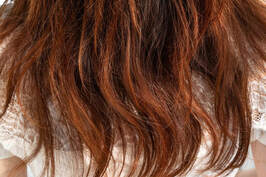 Hair is not meant to feel dry and freshly washed all the time; and even if that's what you're used to, you'll learn to appreciate the feeling of slightly oily hair that's smooth, easy to style, frizz-free, and shiny. Slowly Reduce the Number of Washes Use Less Cleanser If you're a shampoo user, use less so that your hair doesn't get quite so clean. Avoid the unnecessary repeat wash. If you use baking soda and apple cider vinegar, use less. (I started using 2 tbsp of each per wash, but now I'm down to 1 tbsp when I do it. See quantities here.) Do a water-only rinse if you're sweaty after a workout. Massage and Brush 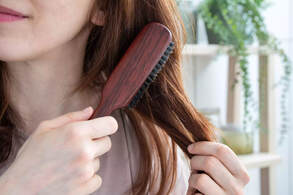 Give yourself a vigorous scalp massage with your fingertips to move the oil away from the scalp and distribute down the hair shaft. Do this once or twice daily. Use a hairbrush to do the same. But for the rest of the time, see the next point... This won't happen overnight. If you wash daily, try to push it by 12 hours, then skip a day. Avoid washing on weekends if you don't have plans. Avoid Touching Your Hair  There's oil on your fingers that will make hair limp and lackluster, the more you touch it. Try to keep your hands off your hair unless you're styling or massaging. Use a Natural Dry Shampoo to Stretch the Time Between Washes
Learn the Hairstyles That Work 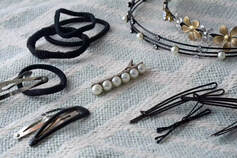 The trick to managing greasiness, I've discovered, is about figuring out how to wear your hair in ways that work. Take advantage of braids, ponytails, buns, headbands, and hairpins to feel presentable and to stretch the time between washes. I find that straightening my hair a day or two after washing helps it go much longer. Think of Washing as Something You Do Only When You Need It, Not Because It's Time 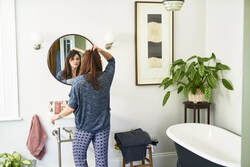 You probably have a hair-washing schedule; but rather than washing it automatically just because that time has come, reassess your hair and see if it can go further. You might be surprised. I now push my washes from 6 to 10 days -- and the difference in the amount of greasiness from day 6 to day 10 is minimal. Don't Give up 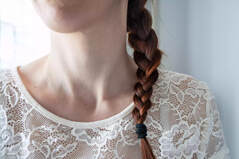 Reducing the frequency of hair-washing will save you loads of time and money. It will result in healthier, stronger, more manageable hair. Go gradually and steadily. It might take two or three months, and you may feel discouraged along the way, but realize that anyone can do this. From TreeHugger
|
Hair by BrianMy name is Brian and I help people confidently take on the world. CategoriesAll Advice Announcement Awards Balayage Barbering Beach Waves Beauty News Book Now Brazilian Treatment Clients Cool Facts COVID 19 Health COVID 19 Update Curlies EGift Card Films Follically Challenged Gossip Grooming Hair Care Haircolor Haircut Hair Facts Hair History Hair Loss Hair Styling Hair Tips Hair Tools Health Health And Safety Healthy Hair Highlights Holidays Humor Mens Hair Men's Long Hair Newsletter Ombre Policies Procedures Press Release Previous Blog Privacy Policy Product Knowledge Product Reviews Promotions Read Your Labels Recommendations Reviews Scalp Health Science Services Smoothing Treatments Social Media Summer Hair Tips Textured Hair Thinning Hair Travel Tips Trending Wellness Womens Hair Archives
June 2025
|
|
Hey...
Your Mom Called! Book today! |
Sunday: 11am-5pm
Monday: 11am-6pm Tuesday: 10am - 6pm Wednesday: 10am - 6pm Thursday: By Appointment Friday: By Appointment Saturday: By Appointment |
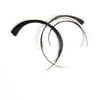







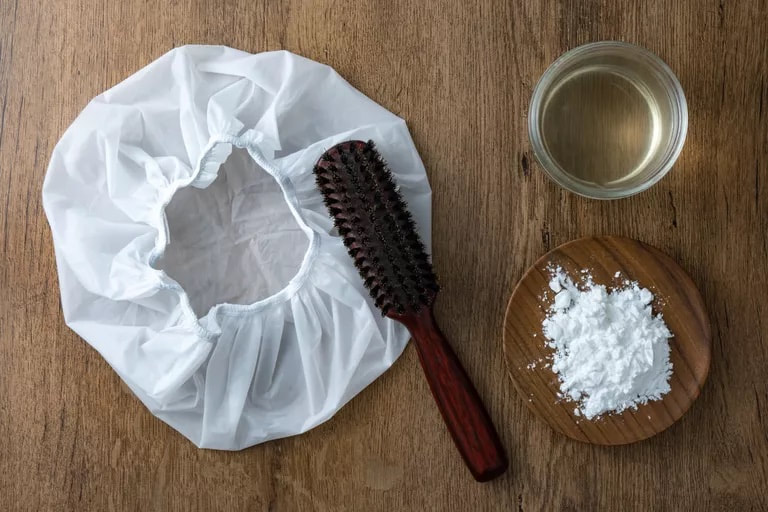
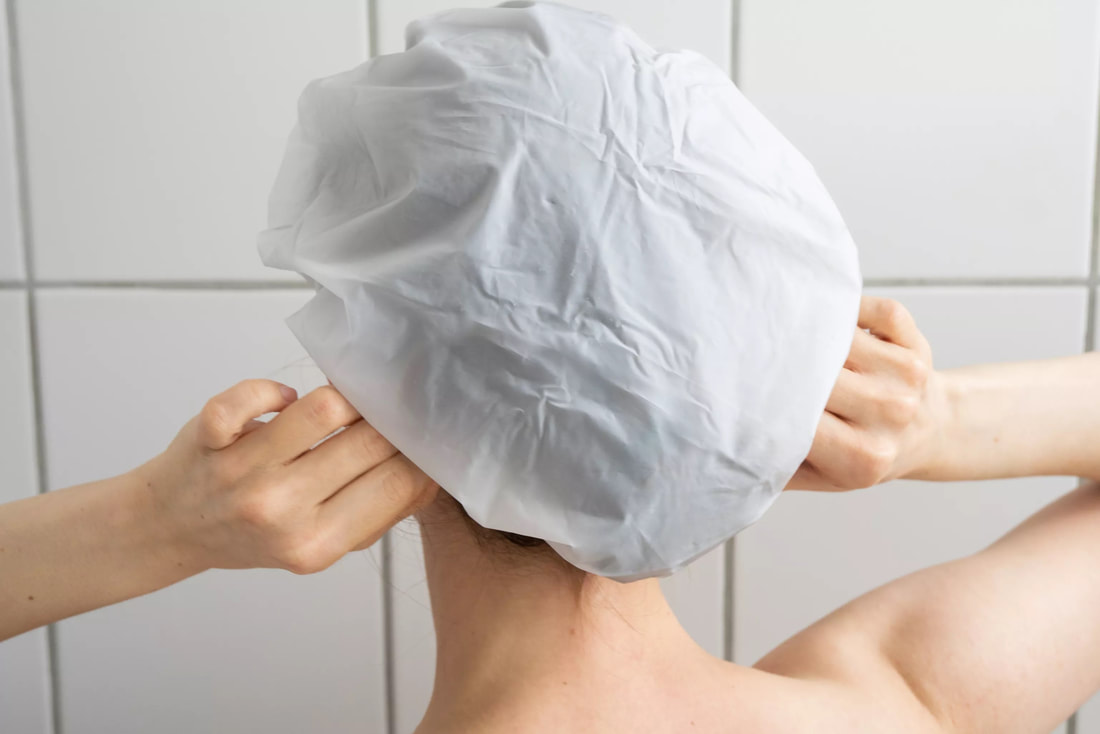
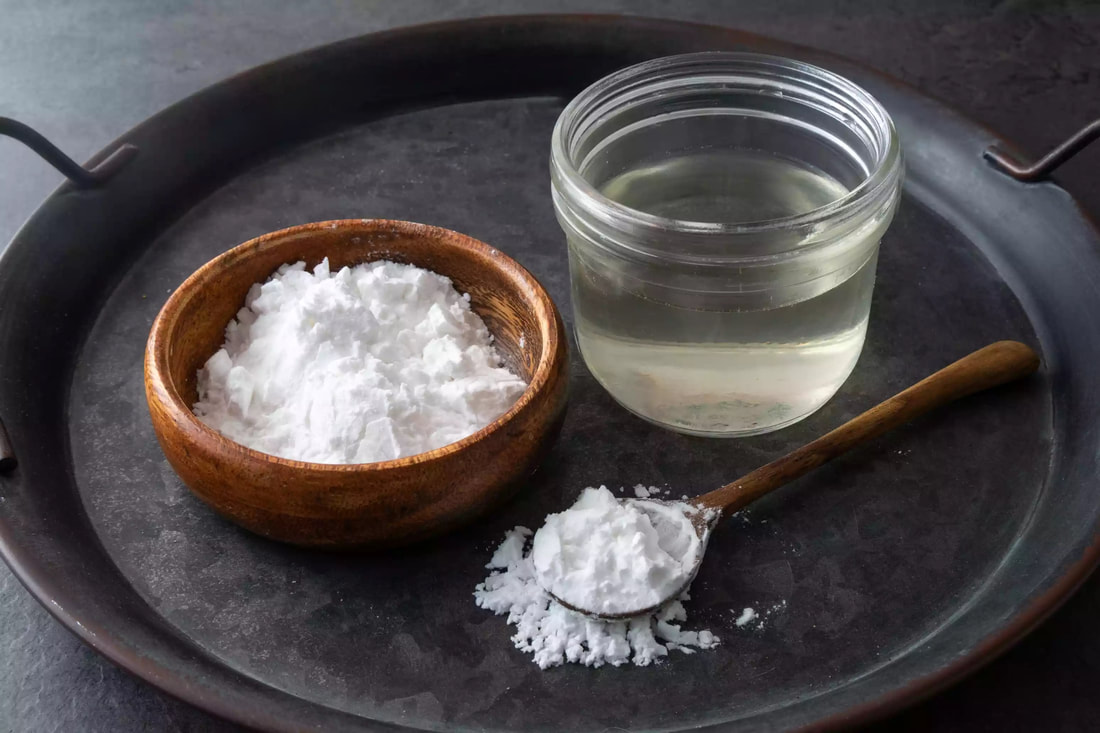
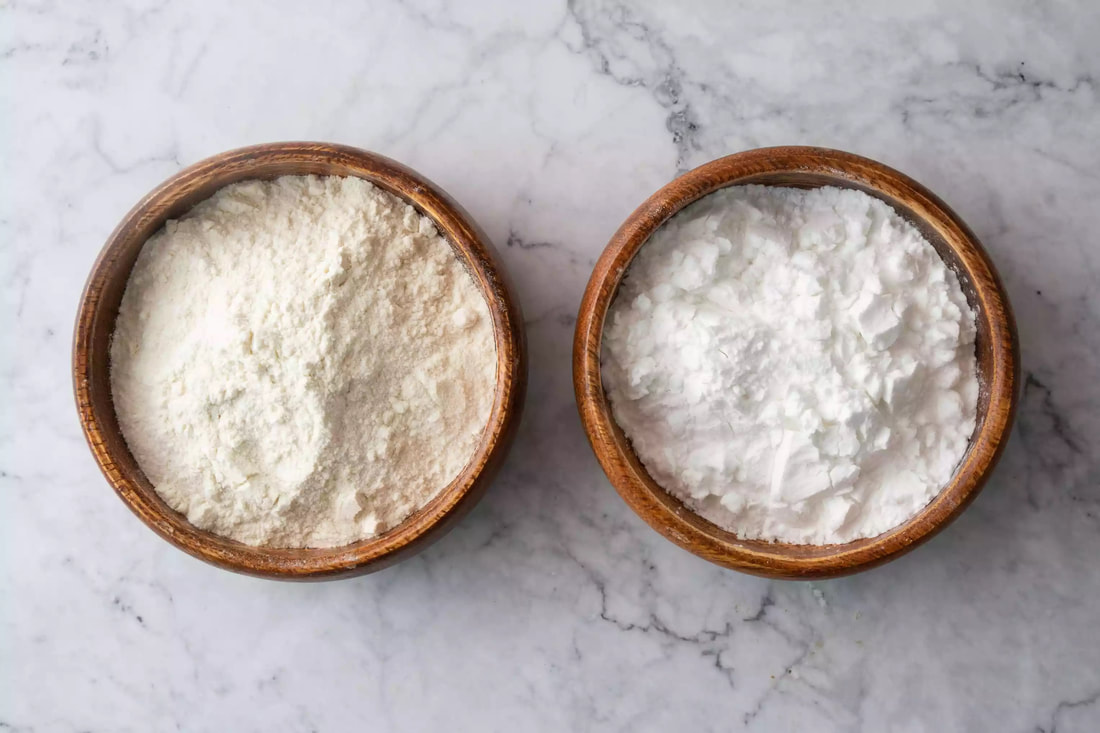
 RSS Feed
RSS Feed